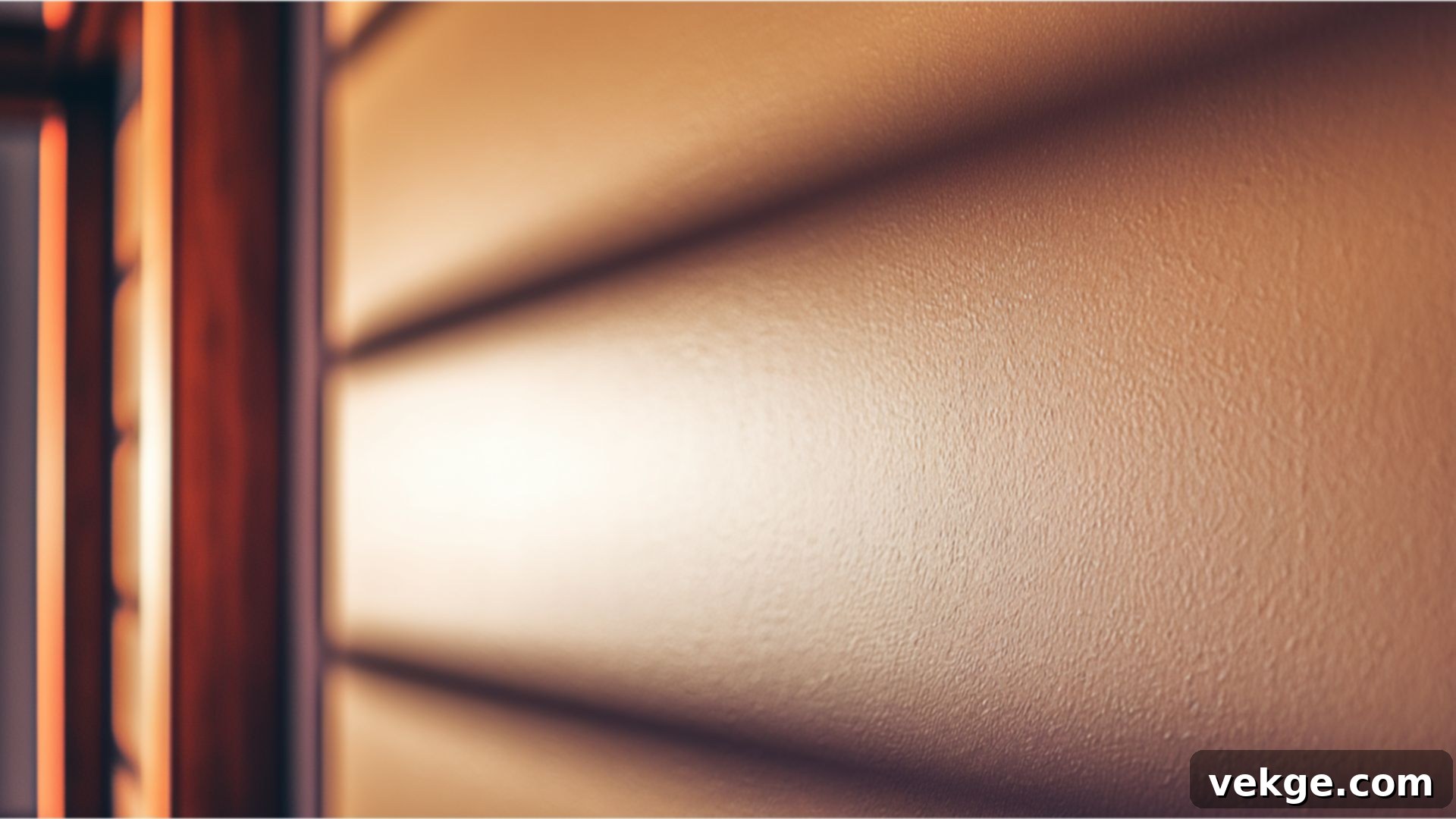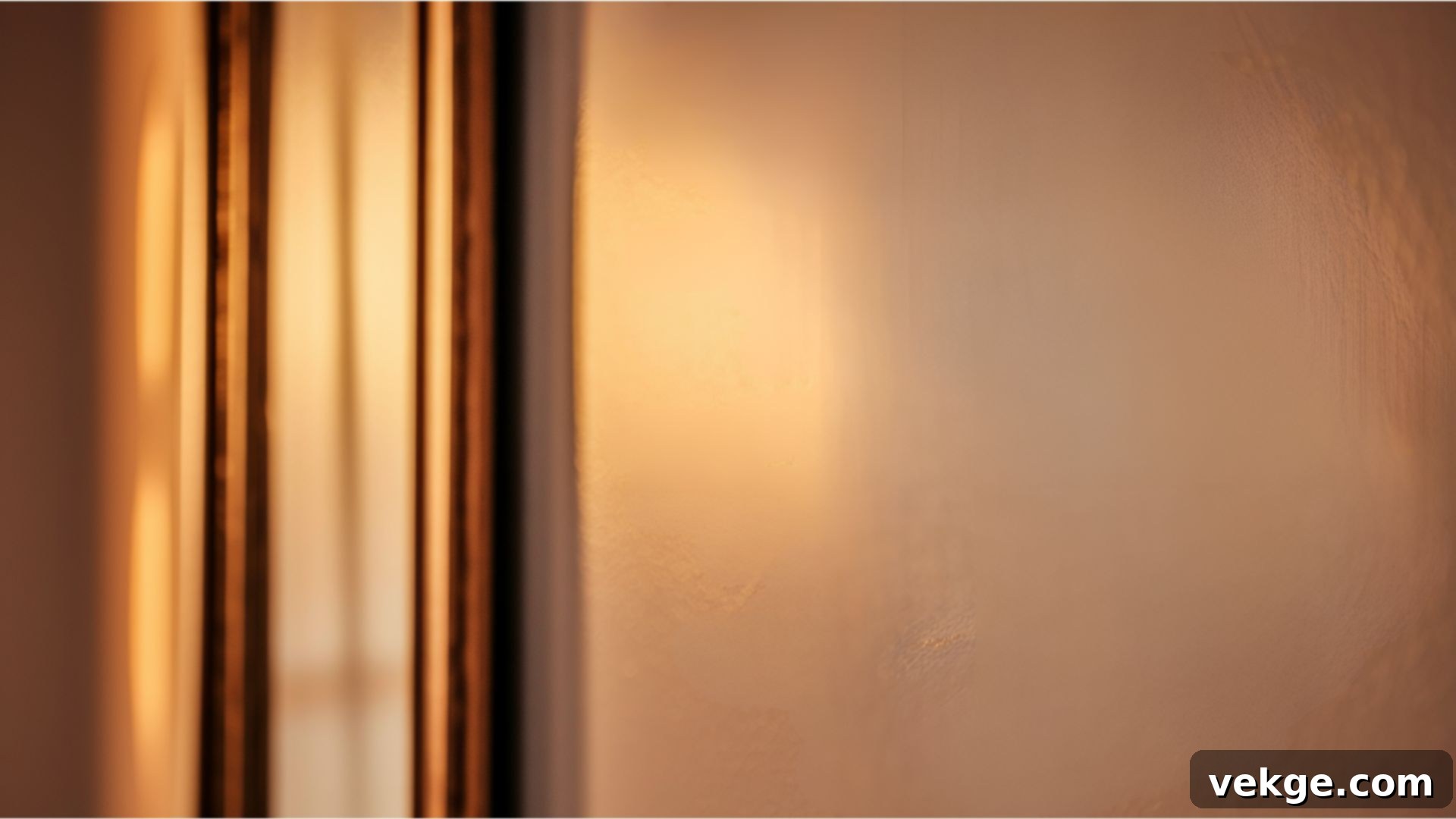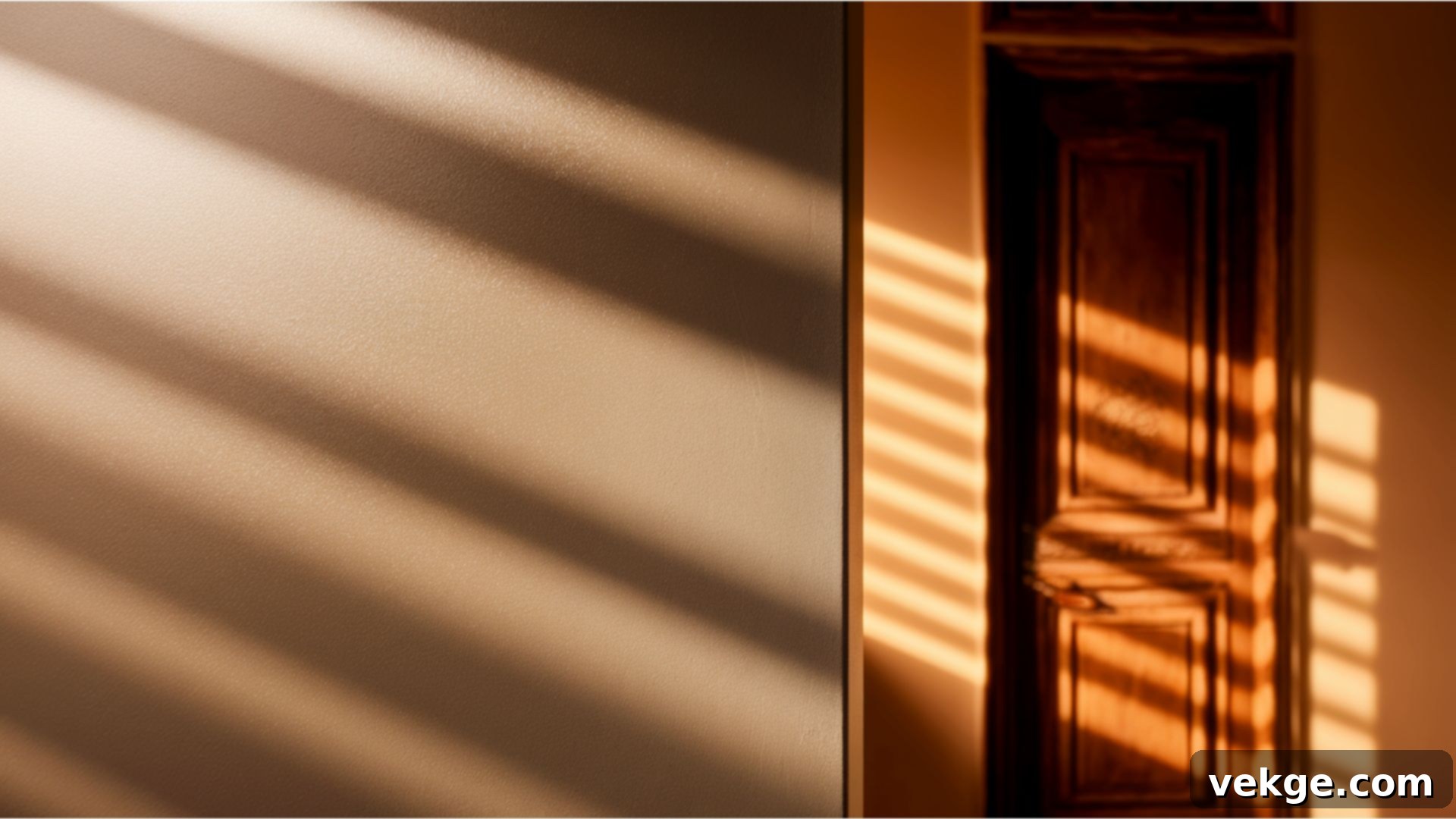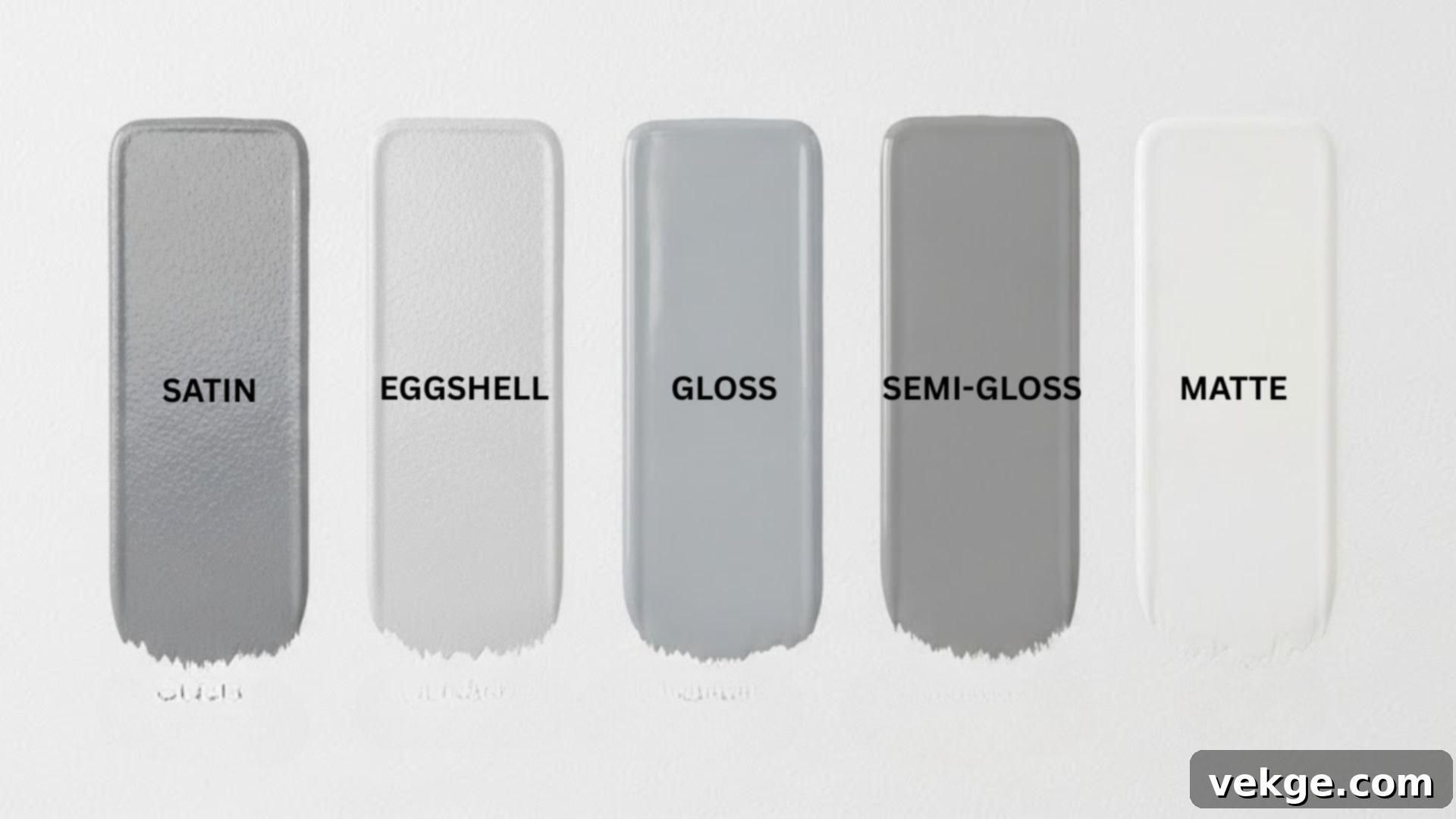Choosing the Perfect Paint Finish: A Comprehensive Guide to Transforming Your Home
Have you ever noticed how the same captivating paint color can appear dramatically different in two separate rooms? The secret often lies not in the hue itself, but in its finish. Selecting the right paint finish is a pivotal decision that profoundly influences not only the aesthetic appeal and tactile feel of your walls but also their durability and how they withstand the test of time.
If you’ve found yourself grappling with walls that easily scuff, surfaces that boast an unwelcome glare, or areas that prove stubbornly difficult to clean, the underlying issue might not be your chosen paint color, but rather the level of sheen. Understanding the nuances of different paint finishes can be a game-changer for any home improvement project, big or small.
This comprehensive guide will illuminate the diverse world of paint finishes, ranging from the understated elegance of flat to the vibrant reflectivity of high gloss. We’ll delve into the unique characteristics of each type, pinpointing where each finish truly excels within your home. Beyond mere descriptions, you’ll gain invaluable insights into selecting the optimal finish for every room and learn practical tips for their proper care and maintenance, ensuring your newly painted surfaces remain pristine for years to come.
Are you ready to discover how to achieve painted surfaces that not only look stunning but also offer lasting beauty and resilience? Let’s explore why considering paint finishes with meticulous attention is an essential step before embarking on your next home transformation project.
Why the Right Paint Finish is Crucial for Your Home’s Aesthetic and Durability
The choice of paint finish goes far beyond mere aesthetics; it fundamentally impacts how your walls interact with light, their tactile feel, and their ability to withstand daily life. Different finishes are engineered to perform best in specific environments, offering varied levels of protection, ease of cleaning, and visual effects. Understanding these distinctions is key to a successful and long-lasting paint job.
For instance, some finishes are masters at concealing minor wall imperfections like bumps, hairline cracks, or uneven textures. Their less reflective surface helps to camouflage flaws, creating a smooth and uniform appearance. However, this often comes with a trade-off: such finishes can be more susceptible to showing fingerprints and might prove challenging to clean vigorously without causing damage. They absorb light, contributing to a soft, inviting atmosphere.
Conversely, other finishes are designed for brilliance and superior light reflection. These higher-sheen options are typically much easier to wipe clean, making them ideal for areas that experience frequent use and potential spills. The sheen level is a direct indicator of a paint’s durability; generally, the higher the sheen, the more robust and protective the finish will be against wear, tear, and moisture. This enhanced durability translates directly into easier maintenance and a longer lifespan for your painted surfaces.
Choosing an inappropriate finish can inadvertently detract from your home’s appeal, potentially making a room appear less refined or even cheap. It’s vital to consider the function of each room and the lifestyle of its occupants. Do children play there? Is it a high-traffic hallway? Does it need to withstand humidity? By aligning the finish with the room’s specific demands, you facilitate easier long-term maintenance and ensure the paint not only looks fantastic but also performs optimally for years to come.
Exploring the Diverse Types of Interior Paint Finishes
Let’s embark on a journey through the spectrum of paint finishes, from the muted depths of flat to the dazzling heights of gloss. Each finish possesses a unique character and set of functional benefits, making it suitable for different applications throughout your home. By understanding these distinctions, you can confidently select the perfect type for every room, tailored to your specific aesthetic desires and practical requirements.
1. Matte or Flat Finish: The Epitome of Softness and Flaw Concealment

The matte or flat finish stands at the lowest end of the sheen spectrum, offering virtually no reflectivity. Instead, it absorbs light, creating a deep, rich color appearance that feels incredibly soft and sophisticated. This lack of shine makes matte paint exceptionally effective at camouflaging surface imperfections, such as minor bumps, hairline cracks, or poorly patched areas, rendering walls appear remarkably smooth and even.
Its primary drawback, however, is its delicate nature. Matte paint is less durable than its shinier counterparts and can be challenging to clean. Aggressive scrubbing can easily damage the finish, leaving behind burnished spots or removing the paint entirely. For these reasons, it is most commonly recommended for low-traffic areas where walls are less likely to be touched or exposed to grime. Bedrooms, formal living rooms, and ceilings are prime candidates for a flat finish, where its cozy aesthetic and ability to hide flaws are highly valued.
2. Eggshell Finish: The Subtle Radiance with Added Resilience

As its name suggests, an eggshell finish offers a very subtle, low-luster sheen, reminiscent of the delicate surface of an eggshell. It’s a modest step up in reflectivity from flat paint, providing a slightly more polished and contemporary look without being overtly shiny. This finish strikes a popular balance between aesthetics and functionality, making it a versatile choice for many homeowners.
Eggshell paint is notably tougher than matte, making it more resistant to scuffs and allowing for gentle cleaning with a damp cloth or sponge. While it still excels at concealing minor wall flaws, its slight sheen gives walls a perceptibly cleaner and more refined appearance than a completely flat finish. It’s an excellent option for moderately trafficked areas such as bedrooms, dining rooms, and even living rooms, where a touch of elegance is desired alongside a degree of practical durability.
3. Satin Finish: The Velvety Smoothness for Active Living Spaces

Satin is one of the most popular paint finishes for interior walls, and for good reason. It boasts a distinct, smooth, and velvety sheen that gives walls a soft glow, often described as having a pearl-like luster. This finish feels remarkably silky to the touch and offers a significantly higher level of durability compared to matte or eggshell, making it a highly practical choice for active households.
Its enhanced durability means satin paint can withstand frequent cleaning much better than lower-sheen options. Fingerprints, scuff marks, and minor splashes can typically be wiped away with ease using a damp cloth and mild detergent. However, the increased reflectivity of satin means that it will reveal wall imperfections, such as bumps and holes, more clearly than flat or eggshell finishes. It’s an excellent choice for high-traffic areas like hallways, family rooms, kids’ bedrooms, and even laundry rooms where both aesthetic appeal and robust performance are desired.
4. Semi-Gloss Finish: The Durable Shine for High-Moisture and High-Touch Areas

Semi-gloss paint offers a noticeable shine, reflecting a good amount of light and adding a crisp, clean look to any surface. This finish is renowned for its exceptional durability and resistance to moisture, making it a perfect candidate for areas that demand rigorous cleaning and can be exposed to humidity. It’s a workhorse finish, built to withstand daily wear and tear with ease.
Its robust nature allows for frequent scrubbing with stronger cleaning agents without fear of damaging the paint film. This makes semi-gloss an ideal choice for high-moisture environments such as kitchens, bathrooms, and laundry rooms, where splashes, steam, and grime are common. However, the high reflectivity of semi-gloss also means that every minor imperfection on the wall’s surface will be prominently visible. Therefore, meticulous surface preparation is crucial before applying this finish. Beyond walls, it is also the go-to choice for trim, doors, and cabinets, offering a bright contrast and superb protection.
5. Gloss Finish: The High-Shine Statement for Architectural Accents

The gloss finish represents the pinnacle of reflectivity, providing a mirror-like shine that is exceptionally polished and vibrant. It reflects the maximum amount of light, creating a dramatic and high-impact visual statement. This finish is by far the most durable and resistant to wear and tear among all paint types, forming a hard, protective shell over the surface.
Its extraordinary toughness means it can withstand repeated cleaning with even strong soaps and detergents, making it almost impervious to stains and scuffs. However, this extreme reflectivity also means that a gloss finish will mercilessly highlight every single flaw, from the smallest scratch and dent to the most minor surface imperfection. For this reason, extensive surface preparation is absolutely critical to achieve a flawless result.
While rarely used for entire walls in residential settings due to its intensity and the need for perfect surfaces, gloss paint is an exceptional choice for furniture, cabinet doors, handrails, and intricate trim work where its durability and striking visual effect can be fully appreciated. It adds a luxurious and sophisticated touch to specific architectural elements.
How to Strategically Choose the Right Paint Finish for Different Surfaces and Rooms
Making informed decisions about paint finishes is essential for both the longevity and aesthetic success of your home’s interior. The key lies in understanding the unique demands of each area within your living space. Consider not only the amount of daily wear and tear a surface will endure but also the ambient lighting, moisture levels, and the overall desired mood for the room. Different rooms and surfaces have distinct requirements based on their function, the frequency of their use, and the types of activities that occur within them.
| Room/Surface | Best Finish | Why to Consider |
|---|---|---|
| High-traffic areas (hallways, entryways, kitchens, laundry rooms) |
Satin, Semi-Gloss, or Gloss | These finishes are exceptionally durable and built to handle frequent bumps, scuffs, and spills. Their higher sheen levels make them remarkably easy to clean, resisting stains and moisture, which is crucial for maintaining a fresh look in heavily used spaces. |
| Low-traffic areas (bedrooms, dining rooms, formal living rooms, home offices) |
Matte or Eggshell | In spaces where walls are less prone to being touched or scuffed, these lower-sheen options excel. They offer a sophisticated, muted aesthetic that creates a cozy and inviting atmosphere. Their ability to beautifully hide minor wall imperfections is a significant advantage, allowing for a smooth visual flow. |
| Ceilings | Matte or Flat | A flat or matte finish is almost universally recommended for ceilings. Its non-reflective quality prevents harsh glare, especially from overhead lighting or natural light. This finish also expertly conceals any minor imperfections, such as uneven plaster or old patch marks, ensuring a seamless and visually uncluttered ceiling plane. |
| Trim and doors (baseboards, crown molding, window frames, interior doors) |
Semi-Gloss or Gloss | These architectural elements are constantly touched, bumped, and accumulate dirt. A semi-gloss or gloss finish provides a tough, durable surface that can withstand rigorous cleaning. Their higher sheen also offers a beautiful contrast against lower-sheen wall paints, accentuating the architectural details of your home. |
| Bathrooms | Satin or Semi-Gloss | Given the high humidity and potential for splashes, a finish that offers excellent moisture resistance and is easy to clean is paramount. Satin or semi-gloss provides the necessary durability and washability, helping to prevent mold and mildew growth while maintaining a fresh appearance. |
| Kids’ Rooms | Satin or Semi-Gloss | Children’s rooms are battlegrounds for fingerprints, crayon marks, and general wear. Satin offers a good balance of durability and a pleasant aesthetic, while semi-gloss provides maximum washability for those inevitable creative outbursts and messes. |
Ultimately, your decision hinges on a careful consideration of your cleaning preferences, the specific use of each room, and your desired aesthetic outcome. Opt for tougher, higher-sheen finishes in areas that demand easy maintenance and frequent washing. For serene spaces, embrace the understated elegance and flaw-hiding properties of lower-sheen paints. Smart planning at this stage will not only ensure a beautiful finish but also save you significant time, effort, and potential repainting headaches down the line.
Essential Tips for Caring for Your Painted Surfaces
Ensuring the longevity and pristine appearance of your painted walls requires a tailored approach to care, as different finishes respond differently to cleaning and environmental factors. With the right strategies, you can maintain the fresh look of all your paint finishes, protecting your investment and preserving your home’s beauty. Here are some crucial care tips to keep in mind:
- Protect Against Sun Damage: Prolonged exposure to direct sunlight can lead to fading, discoloration, and even premature degradation of paint finishes, particularly for higher-sheen options like gloss and semi-gloss. Utilize window treatments such as blinds, curtains, or UV-filtering film to provide essential protection and extend the vibrancy of your paint.
- Precision Touch-Ups with Painter’s Tape: When performing touch-ups, especially on trim, doors, or areas where different finishes meet, painter’s tape is your best friend. Apply it meticulously to create crisp, clean lines and prevent paint bleeding, which can ruin the professional appearance of your walls.
- Regular Dusting for Low-Sheen Finishes: Matte and eggshell finishes, by their nature, tend to absorb dust and grime rather than allowing it to sit on the surface. Regular, gentle dusting with a soft, clean microfiber cloth is essential to prevent buildup and keep these walls looking fresh and clean without risking damage from scrubbing.
- Employ Furniture Protectors: To safeguard your walls, especially those painted with more reflective finishes like satin, semi-gloss, or gloss that show marks more readily, use felt pads or furniture protectors on the backs of furniture. This prevents unsightly scratches, scuffs, and indentations that can occur when furniture is moved or placed too close to walls.
- Prompt Stain Removal for High-Sheen Paints: Semi-gloss and gloss finishes are highly durable but can reveal stubborn blemishes if stains are allowed to set. Clean spills and marks promptly using a soft cloth dampened with a mild soap solution. Their robust surface allows for more vigorous cleaning than lower-sheen paints, but immediate action is always best to prevent permanent marks.
- Test Cleaning Solutions: Always test any cleaning solution on an inconspicuous area of the wall first, regardless of the finish. This ensures that the cleaner will not damage or dull the paint, preserving the integrity and appearance of your surfaces.
By implementing these simple yet effective maintenance practices, you can significantly extend the life and beauty of your paint job. Proper care is not just about cleaning; it’s about protecting your investment and ensuring your home remains a source of pride and comfort.
Common Mistakes to Avoid When Selecting a Paint Finish
While choosing paint colors often takes center stage, overlooking the importance of the finish can lead to a host of avoidable problems down the road. Many homeowners make simple yet impactful mistakes when selecting paint finishes. By understanding these common pitfalls, you can make more informed decisions and ensure your paint job not only looks great but also performs optimally for years to come.
- Ignoring Room Traffic and Function: One of the most frequent errors is selecting a finish without adequately considering how much wear and tear each room experiences. Using a delicate flat paint in a bustling hallway or a kid’s playroom will inevitably lead to scuffs, marks, and frustration when cleaning. Always prioritize durability and washability for high-traffic or high-moisture areas.
- Focusing Solely on Aesthetic Appeal: While the visual impact of a finish is important, making a choice based on appearance alone, without factoring in practical aspects like cleaning requirements and resistance to moisture, is a recipe for maintenance headaches. A beautiful flat finish might look elegant but will quickly become a burden in a kitchen that needs frequent wiping. Balance beauty with functionality.
- Applying a Single Finish Throughout the Entire Home: The “one-size-fits-all” approach to paint finishes is rarely effective. Different rooms have different needs. Applying the same finish everywhere ignores the specific demands of varying environments, from humid bathrooms to quiet bedrooms, leading to suboptimal performance and potential dissatisfaction in certain areas. Tailor your choices to each space.
- Neglecting the Impact of Lighting: Paint finishes interact with light in distinct ways. A high-sheen finish can create unwanted glare or harsh reflections in a brightly lit room or one with large windows. Conversely, a very flat finish might make a dimly lit room feel even darker. Always consider how natural and artificial light sources will interact with the chosen finish, perhaps even testing samples on your walls under different lighting conditions.
- Skipping Test Samples: A paint finish can look significantly different on a small swatch than it does on an entire wall. Furthermore, the finish can alter the perception of the paint color itself. Always purchase small sample pots and paint swatches (at least 2×2 feet) on your walls, observing them at different times of day and under various lighting conditions, before committing to a full purchase.
Avoiding these common mistakes will save you significant time, money, and effort in the long run. Prioritize the function and practical demands of each space first, then select the most aesthetically pleasing option that aligns with those functional requirements. A well-chosen paint finish is a cornerstone of a successful and enduring interior design.
Final Thoughts: The Enduring Impact of a Well-Chosen Paint Finish
As we’ve explored, the world of paint finishes is as diverse and impactful as the color palette itself. You now understand that the choice of paint finish is far from a minor detail; it’s a critical decision that profoundly affects how your walls look, feel, and perform over time. The right finish not only enhances the visual appeal of your home but also plays a vital role in its cleanliness, durability, and overall maintenance.
Remember to consider the unique characteristics and usage patterns of each room in your home. By thoughtfully matching the finish to the function of the space, you can proactively avoid future frustrations and ensure a paint job that truly stands the test of time. A simple, well-considered switch in sheen can translate into significant savings in effort and hassle later on, making your daily life smoother and your home more enjoyable.
From what we’ve seen, high-traffic and high-moisture areas undeniably benefit from the superior durability and washability of higher-sheen finishes like satin and semi-gloss. Conversely, more serene and less-used spaces can perfectly accommodate the soft, flaw-hiding elegance of matte or eggshell paints. And never underestimate the transformative power of light; it truly dictates how a finish appears and interacts with its surroundings.
Are you eager to uncover more expert tips and innovative ideas for your upcoming home improvement endeavors? Be sure to explore our other engaging blogs on the website. They are packed with easy-to-follow guides and smart solutions designed to empower you to paint with confidence and achieve professional-looking results every time.
